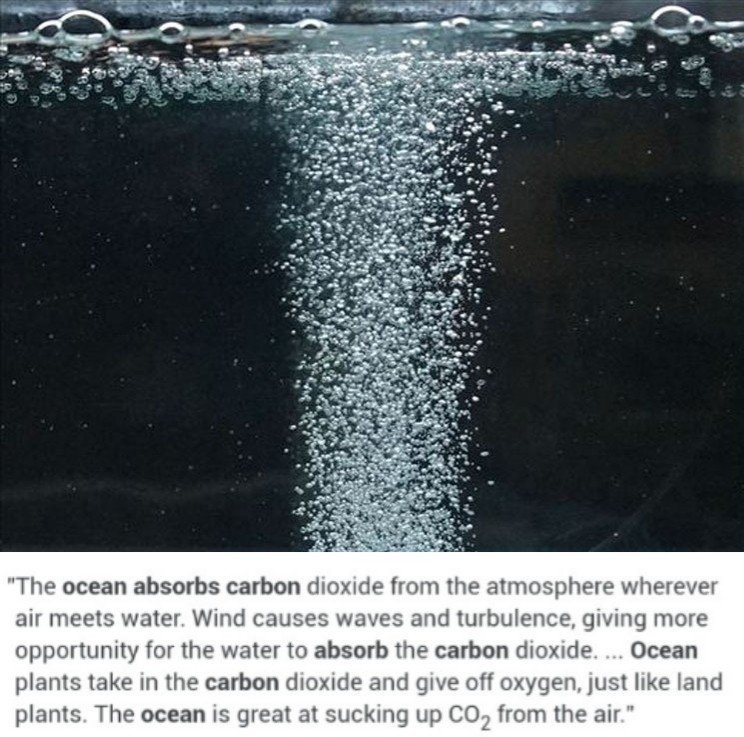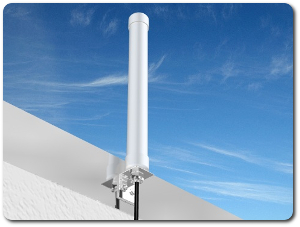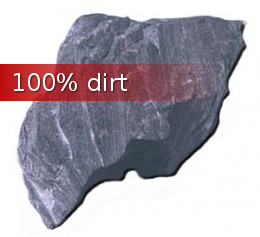Magnetic solution to reducing carbon emissions and increasing fuel efficiency
Getting Off Oil, World news Friday, November 29th, 2013
We already have the technology and knowhow to reduce CO2 emissions and help put an end to global warming, smog and carbon emission causing diseases. The carbon from the oxidation zone of the gases carbon dioxide (CO2) can be filtered out using magnets. While it may seem impossible to visualize carbon sticking to a magnet this discovery can play a major role in reducing global and localized carbon emissions. A Fuelreducer designed device called the Magnetic Emissions Control Assembly (MECA) uses permanent magnets (can also use electromagnets – a type of magnet in which the magnetic field is produced by electric current) to reduce carbon emissions by filtering out (by magnetic attraction) the carbon from CO2 emissions as it leaves the main source of CO2 emissions – the automotive exhaust tailpipe.
How does the Fuelreducer MECA do this? An atom’s electrons have a negative electric charge; its protons are positively charged, and its neutrons have no charge. Carbon dioxide (CO2) has three atoms, one carbon with six protons and six neutrons, each oxygen has 8 protons and 8 neutrons. CO2 has a total of 22 protons: 6 + 8 + 8 = 22 protons. Irradiation of those protons can cause carbon to transform into a ferromagnetic material. Ferromagnetic material is a type of material that is highly attracted to magnets and can become permanently magnetized. A ferromagnetic material, that is highly attracted to magnets, can be filtered out of a liquid or gas. When the tiny carbon of CO2 is transformed into a ferromagnetic material and passed between permanent magnets the carbon is filtered out of the CO2 by the magnetic attraction of the magnets and only O2 is exhausted into the atmophere.
Before the carbon can be transformed into a ferromagnetic material and be filtered out leaving only O2 emissions the carbon has to be irradiated. Irradiation is the process by which something is exposed to radiation. Electromagnetic radiation (EM radiation or EMR) is one of the fundamental phenomena of electromagnetism, behaving as waves propagating through space and also as photon particles traveling through space, carrying radiant energy. Static (lacking in movement, action, or change) permanent magnets do not emit electromagnetic radiation so “static” permanent magnets cannot technically irradiate CO2 causing the carbon to transform into a ferromagnetic material. However, when a liquid or gas flows between “static” permanent magnets Eddy currents (electromagnetic radiation) are created and they excite the CO2 protons and causes the carbon to transform into a ferromagnetic material. Eddy currents are electric currents induced within conductors by a changing magnetic field in the conductor. These circulating eddies of current have inductance and thus induce electromagnetic fields. These fields can cause repulsion, attraction, propulsion, drag, and heating effects. Eddy currents in conductors with magnetic caused resistance generates heat – a form of electromagnetic radiation – as well as a strong electromagnetic field.
Electromagnetic radiation (heat, light, ultraviolet, or other electromagnetic waves) is emitted and absorbed by charged particles. The CO2’s 22 protons (as stated above) are positively charged particles. Because Eddy currents have inductance and thus induce electromagnetic fields and electromagnetic radiation (heat) they can be used to irradiate the protons of the “flowing” CO2 emissions and cause the carbon being exhausted out the tailpipe of your vehicle to transform into a ferromagnetic material and can now be magnetically filtered out by the Fuelreducer MECA. Not all of the carbon will be filtered out but enough to have an noticeable and lasting impact on carbon emissions.
The Fuelreducer MECA (a smaller version of it) can also be used to increase your vehicle’s fuel efficiency. A magnetic field can be used to break down gasoline molecules into high mileage gas vapor. Oil refineries use heat and pressure to “crack” heavy hydrocarbon molecules into lighter ones. This process is called Catalytic Cracking: breaking down the large molecules of heavy crude oil into smaller gasoline molecules. Heating the fuel causes the liquid to expand and convert into a gas vapor. Heating the liquid fuel anywhere before it reaches the engine will cause the liquid fuel to gasify resulting in an increase in fuel efficiency.
One way of heating the liquid fuel is by passing the fuel through an induction coil. The induction coil uses direct electrical (DC) current (car battery) to cause an otherwise non-spontaneous chemical reaction and separation of the liquid fuel molecules into gas vapor molecules. In other words, “crack” heavy hydrocarbon molecules into lighter ones. An induction coil creates a magnetic field which permeates into a vehicle’s fuel lines. A permanent magnet can do the same thing – create a magnetic field which permeates into a vehicle’s fuel lines and cause an otherwise non-spontaneous chemical reaction and separation of the liquid fuel molecules into gas vapor molecules – but without requiring any external electrical energy source (car battery).
The presence of the magnetic field in the fuel line induces Eddy currents in accordance with Faraday’s Law of Electromagnetic Induction. When a liquid (gasoline or diesel) is passed through a magnetic field the magnetic field changes the molecular structure of the liquid.
The Department of Physics, Temple University, Philadelphia, PA under the sponsorship of RAND Corporation found that a strong magnetic field can reduce the viscosity (thickness) of gasoline. diesel, and kerosene, no matter if they contain any additive or not. Temple University determined that a magnetic field can thin fuel so that much smaller droplets are injected into the vehicle’s engine. As a result higher fuel mileage is possible. Add a strong magnetic field (using a smaller version of the FuelReducer MECA) to your vehicle’s fuel delivery system and your vehicle’s fuel mileage is increased.
Short URL: https://presscore.ca/news/?p=9685

 The Halifax International Security Forum was founded in 2009 as a propaganda program within the German Marshall Fund (founded June 5, 1972 by West German Chancellor Willy Brandt) by the Crown in Canada using Crown Corp ACOA & DND funds. The Halifax International Security Forum is a front that is used to recruit top US, UK and Canadian gov and military officials as double agents for Canada's WWI, WWII enemy and wage new Vatican Germany Cold War.
High Treason: s.46 (1) Every one commits high treason who, in Canada (c) assists an enemy at war with Canada, ..., whether or not a state of war exists". Every one who, in Canada assists Canada's enemies wage "piecemeal WWIII" Cold War by organizing, funding and participating in the Germany government politically and militarily benefitting / lead Halifax International Security Forum is committing high treason.
The Halifax International Security Forum was founded in 2009 as a propaganda program within the German Marshall Fund (founded June 5, 1972 by West German Chancellor Willy Brandt) by the Crown in Canada using Crown Corp ACOA & DND funds. The Halifax International Security Forum is a front that is used to recruit top US, UK and Canadian gov and military officials as double agents for Canada's WWI, WWII enemy and wage new Vatican Germany Cold War.
High Treason: s.46 (1) Every one commits high treason who, in Canada (c) assists an enemy at war with Canada, ..., whether or not a state of war exists". Every one who, in Canada assists Canada's enemies wage "piecemeal WWIII" Cold War by organizing, funding and participating in the Germany government politically and militarily benefitting / lead Halifax International Security Forum is committing high treason.
 Please take a moment to sign a petition to
Please take a moment to sign a petition to 









































 1917 Code of Canon Law, Canon 185 invalidates (voids) all papacies since October 26, 1958 due to the fact Cardinal Giuseppe Siri was elected Pope on the Third ballot on Oct 26 1958 but the new Pope Gregory XVII was illegally prevented from assuming the office. A Pope was elected on October 26, 1958. Thousands of people witnessed a new Pope being elected by seeing white smoke and millions were informed by Vatican radio broadcasts beginning at 6:00 PM Rome time on October 26, 1958. The papacy of Francis, Benedict, John Paul II, John Paul I, Paul VI, John XXIII and any and all of their respective doctrines, bulls, letter patents and the Second Vatican Council are all invalidated (having no force, binding power, or validity) by Canon 185 because the 1958 conclave of cardinals elected Cardinal Giuseppe Siri Pope on Oct 26 1958. Cardinal Giuseppe Siri accepted the papacy by taking the name Pope Gregory XVII but was illegally prevented from assuming his elected office.. According to Canon 185 Cardinal Angelo Giuseppe Roncalli illegally assumed the papacy 2 days later by fraud and grave fear, unjustly inflicted against Cardinal Giuseppe Siri who was lawfully elected Pope Gregory XVII. Because no Pope has been lawfully elected since October 26, 1958 the Holy See (la Santa Sede/Seat) remains vacant.
1917 Code of Canon Law, Canon 185 invalidates (voids) all papacies since October 26, 1958 due to the fact Cardinal Giuseppe Siri was elected Pope on the Third ballot on Oct 26 1958 but the new Pope Gregory XVII was illegally prevented from assuming the office. A Pope was elected on October 26, 1958. Thousands of people witnessed a new Pope being elected by seeing white smoke and millions were informed by Vatican radio broadcasts beginning at 6:00 PM Rome time on October 26, 1958. The papacy of Francis, Benedict, John Paul II, John Paul I, Paul VI, John XXIII and any and all of their respective doctrines, bulls, letter patents and the Second Vatican Council are all invalidated (having no force, binding power, or validity) by Canon 185 because the 1958 conclave of cardinals elected Cardinal Giuseppe Siri Pope on Oct 26 1958. Cardinal Giuseppe Siri accepted the papacy by taking the name Pope Gregory XVII but was illegally prevented from assuming his elected office.. According to Canon 185 Cardinal Angelo Giuseppe Roncalli illegally assumed the papacy 2 days later by fraud and grave fear, unjustly inflicted against Cardinal Giuseppe Siri who was lawfully elected Pope Gregory XVII. Because no Pope has been lawfully elected since October 26, 1958 the Holy See (la Santa Sede/Seat) remains vacant.
 Hold the Crown (alias for temporal authority of the reigning Pope), the Crown appointed Governor General of Canada David Lloyd Johnston, the Crown's Prime Minister (servant) Stephen Joseph Harper, the Crown's Minister of Justice and Attorney General Peter Gordon MacKay and the Crown's traitorous military RCMP force, accountable for their crimes of treason and high treason against Canada and acts preparatory thereto. The indictment charges that they, on and thereafter the 22nd day of October in the year 2014, at Parliament in the City of Ottawa in the Region of Ontario did, use force and violence, via the staged false flag Exercise Determined Dragon 14, for the purpose of overthrowing and besieging the government of Canada contrary to Section 46 of the Criminal Code. In a society governed by the rule of law, the government and its officials and agents are subject to and held accountable under the law. Sign the online
Hold the Crown (alias for temporal authority of the reigning Pope), the Crown appointed Governor General of Canada David Lloyd Johnston, the Crown's Prime Minister (servant) Stephen Joseph Harper, the Crown's Minister of Justice and Attorney General Peter Gordon MacKay and the Crown's traitorous military RCMP force, accountable for their crimes of treason and high treason against Canada and acts preparatory thereto. The indictment charges that they, on and thereafter the 22nd day of October in the year 2014, at Parliament in the City of Ottawa in the Region of Ontario did, use force and violence, via the staged false flag Exercise Determined Dragon 14, for the purpose of overthrowing and besieging the government of Canada contrary to Section 46 of the Criminal Code. In a society governed by the rule of law, the government and its officials and agents are subject to and held accountable under the law. Sign the online  Two of the most obvious signs of a dictatorship in Canada is traitorous Stephen Harper flying around in a "military aircraft" and using Canadian Special Forces "military" personnel from JTF2 and personnel from the Crown's traitorous martial law "military" RCMP force as his personal bodyguards.
Two of the most obvious signs of a dictatorship in Canada is traitorous Stephen Harper flying around in a "military aircraft" and using Canadian Special Forces "military" personnel from JTF2 and personnel from the Crown's traitorous martial law "military" RCMP force as his personal bodyguards.





































Oil refineries use heat and pressure to “crack” heavy hydrocarbon (crude oil) molecules into smaller ones and produce diesel, gasoline, kerosene, jet fuel and other carbon fuels. Catalytic Cracking can also be done, and has been done, using strong electromagnetic fields.
A fuel electromagnetic cracking solenoid (EMCS) can crack gasoline and diesel fuel and produce high mileage and long lasting gas vapor fuel. Electromagnetic cracking can be used in vehicles as well as at home for home heating and electrical power generation. You don’t need a lot of energy to crack gasoline and diesel. The power source for the Fuel EMCS is already installed in your vehicle(s). Your vehicle’s battery, which is recharged while you drive by the alternator, provides all the energy you need to crack gasoline and diesel and produce a high mileage gas vapor fuel. Even if they water down or dope the gasoline and diesel with fuel additives, a Fuel EMCS can crack the water (H2O) in the fuel and convert the water into a hydrogen gas fuel as you drive.
Most vehicles today have plastic composite fuel lines. They got rid of the metal ones to prevent you from heating the fuel before it is injected into the gas combustion engine of your vehicle. As stated in the article above: “Heating the liquid fuel anywhere before it reaches the engine will cause the liquid fuel to gasify resulting in an increase in fuel efficiency.”
You can increase your vehicle’s fuel efficiency even without metal fuel lines. Again, as stated in the above article: “a strong magnetic field can thin fuel so that much smaller droplets are injected into the vehicle’s engine. As a result higher fuel mileage is possible.”
You can perform a simple test and see for yourself how magnets work to reduce fuel consumption by taping small round magnets to the plastic fuel line of your vehicle as shown in the image I designed above (click on the image to enlarge). No mechanic is required. Just some small powerful magnets and a roll of electrical tape. The electrical tape will secure the magnets to the plastic fuel line as well as waterproof and insulate the magnets. Attach the magnets to the intake fuel line, not the return fuel line (yes there are usually 2 fuel lines. The return line does what its name says – it returns fuel to the gas tank).
“Gasoline in the liquid form does not even burn, much less, explode. Only the vapor that comes from the gasoline will burn. Therefore, to mix raw gasoline with air, and attempt to explode it in an internal combustion engine is a very wasteful, costly, and polluting practice. It also shortens the life of the engine and exhaust system.” ~ Popular Science, December 1957
Magnets helps convert liquid fuel into a more volatile gaseous state.
Learn more about how liquid fuel gasification increases fuel efficiency by reading the PRESS Core article titled; “U.S. automakers and Oil industry’s guarded high fuel mileage secret.”
It has been an honor serving you and informing you. I tried my best to protect and preserve our rights and freedoms and to protect you from harms way. God bless you all.